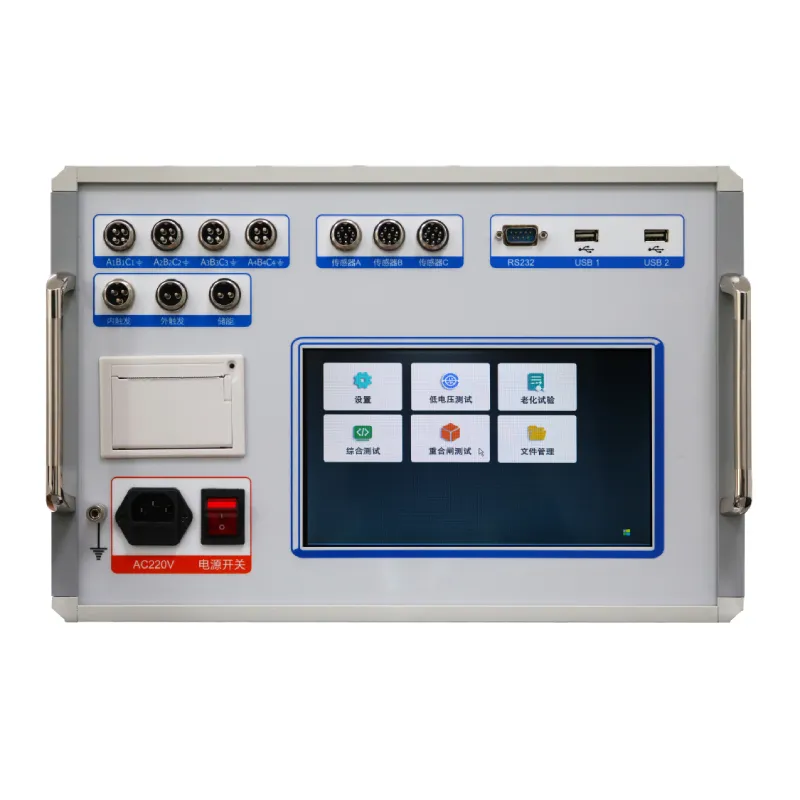 English
English


Understanding the Functionality and Applications of Low Impedance Testing Devices for Electrical Safety
Understanding Low Impedance Testers A Key Tool for Electrical Safety
In the electrical industry, ensuring safety and functionality is paramount. One of the essential tools that professionals rely on is the low impedance tester. This device is specifically designed to measure the resistance of earth ground connections and equipment effectively. Understanding how low impedance testers work, their importance, and their applications can significantly contribute to enhancing safety standards in electrical installations.
What Is a Low Impedance Tester?
A low impedance tester is an instrument used to measure low resistances, typically in the range of 0.1 ohms to several ohms. Unlike traditional multimeters, which may provide inaccurate readings in the presence of parallel paths or surface insulation resistance, low impedance testers utilize a four-wire measurement method. This technique minimizes the influence of lead and contact resistances, allowing for more accurate readings.
The key feature that sets low impedance testers apart is their ability to apply a low frequency AC signal. This signal helps negate the effects of insulation resistance that can interfere with readings for grounding systems. This is especially critical in safety testing applications, where knowing the true impedance of a grounding system can mean the difference between safety and risk of electric shock.
Importance of Low Impedance Testing
Low impedance testing is vital in various scenarios, from checking the integrity of grounding systems to ensuring proper connections in electrical equipment. Grounding systems play a crucial role in protecting individuals and equipment from electrical faults. A poorly grounded system can lead to dangerous situations, such as electric shock, equipment damage, or even fires.
By performing low impedance tests, professionals can ensure that grounding connections have sufficiently low resistance to allow fault currents to flow effectively. These tests are particularly important in industrial settings, where large machinery and equipment are involved, and the risks can be significantly elevated.
low impedance tester

Applications in Various Industries
Low impedance testers find their applications across a multitude of industries. In the construction sector, they are used to check grounding connections for new electrical installations. For utilities, these testers are crucial in maintaining the integrity of their grounding systems, especially following upgrades or repairs.
In the telecommunications industry, low impedance testing helps ensure that transmission lines are adequately grounded, which is critical for operational performance and safety. Additionally, laboratories and research facilities use these testers to maintain compliance with safety regulations and standards.
How to Use a Low Impedance Tester
Using a low impedance tester requires some basic knowledge and adherence to safety guidelines. Typically, the process involves connecting the tester leads to the grounding point being tested. The tester then applies a current and measures the resulting voltage drop. The resistance is calculated using Ohm’s Law (R = V/I), where R is the resistance, V is the voltage, and I is the current.
It’s essential to follow the manufacturer's instructions carefully and ensure that the equipment is calibrated correctly for accurate results. Additionally, safety precautions must be taken, including wearing appropriate personal protective equipment and ensuring the area is secure to prevent accidents.
Conclusion
Low impedance testers are indispensable tools for ensuring electrical safety and compliance in various sectors. Their ability to accurately measure low resistances, especially in grounding systems, plays a critical role in preventing electrical faults and ensuring safe operations. As industries continue to advance, the reliance on such testing equipment will only increase, highlighting the need for professionals to be well-versed in their use and importance. By prioritizing regular low impedance testing, businesses can uphold safety standards and protect both personnel and equipment.
-
Differences between open cup flash point tester and closed cup flash point testerNewsOct.31,2024
-
The Reliable Load Tap ChangerNewsOct.23,2024
-
The Essential Guide to Hipot TestersNewsOct.23,2024
-
The Digital Insulation TesterNewsOct.23,2024
-
The Best Earth Loop Impedance Tester for SaleNewsOct.23,2024
-
Tan Delta Tester--The Essential Tool for Electrical Insulation TestingNewsOct.23,2024





